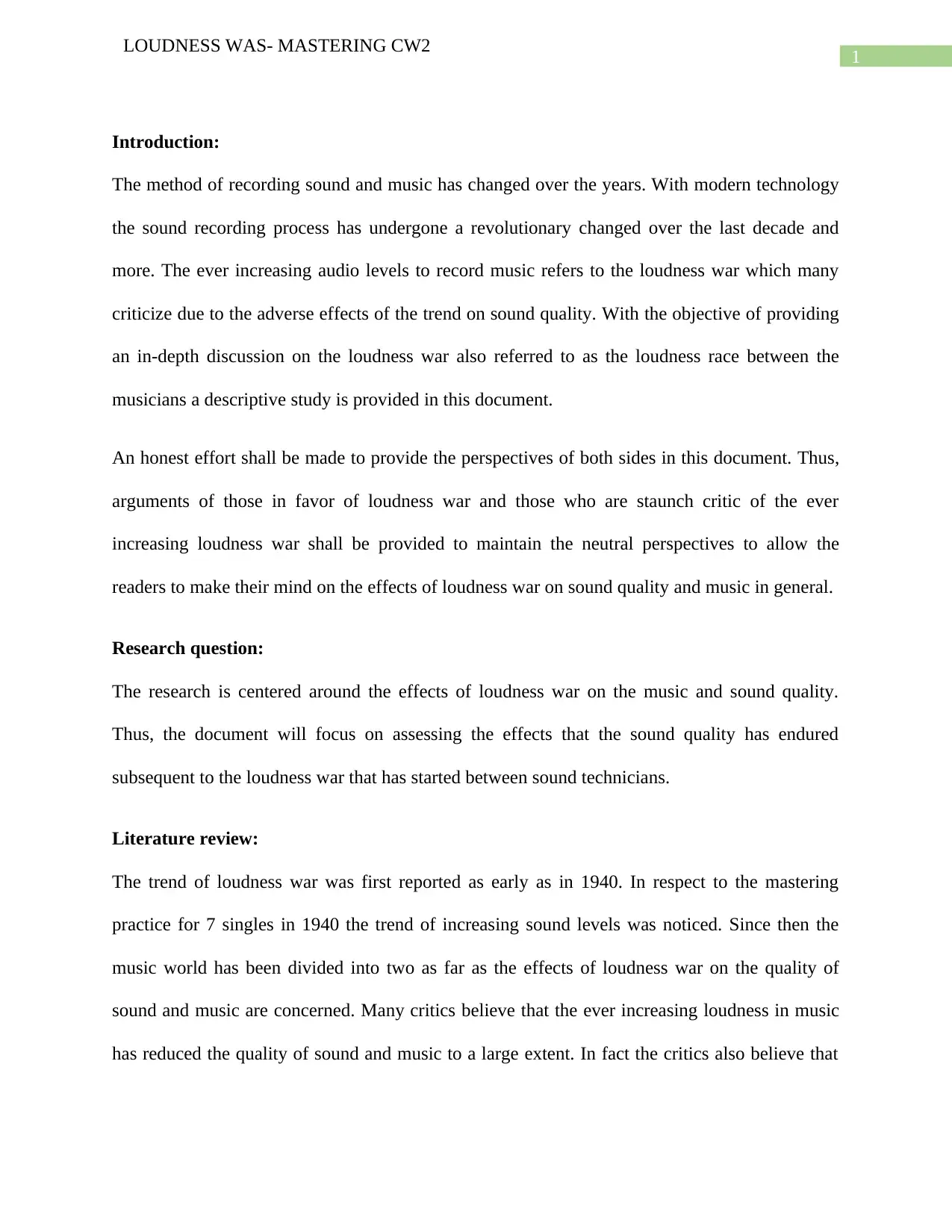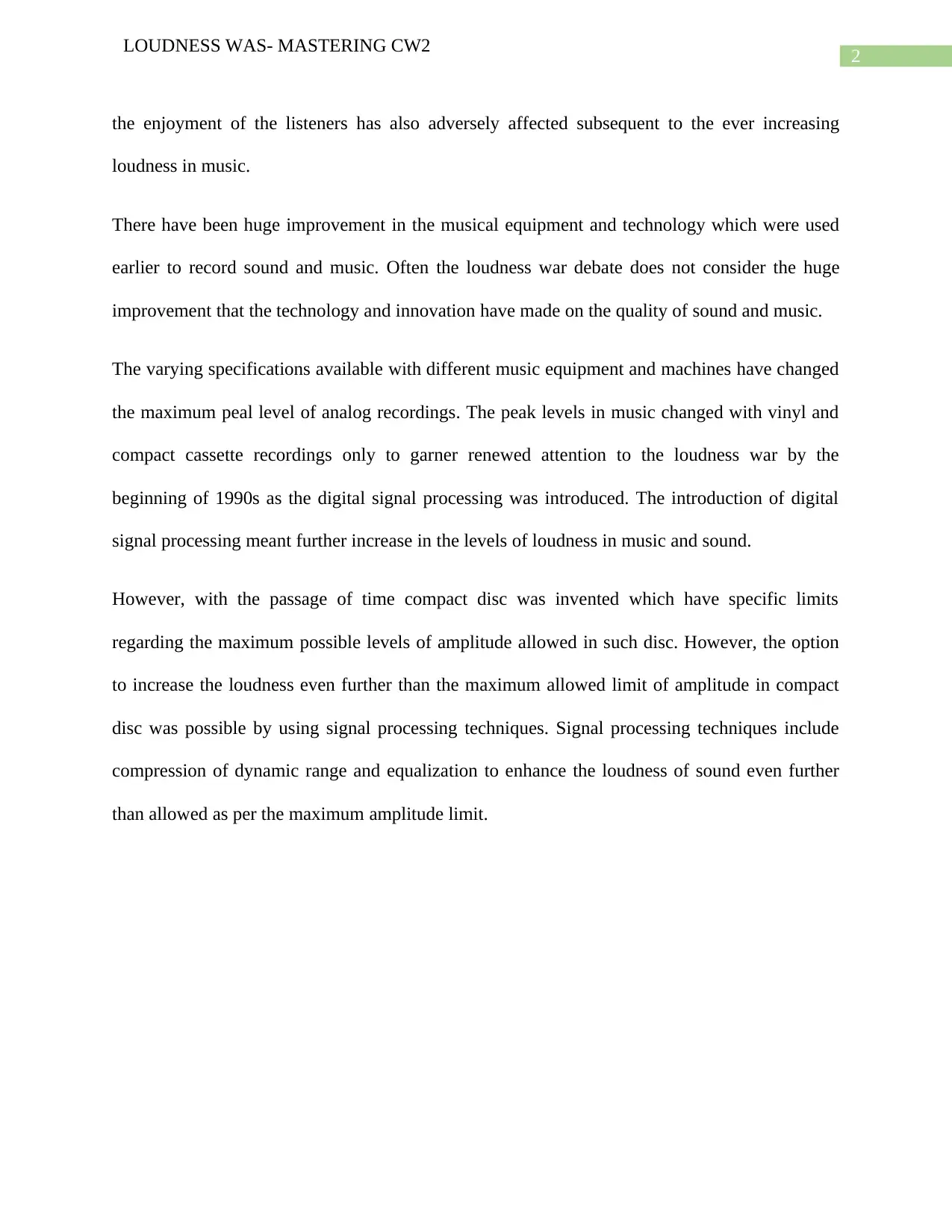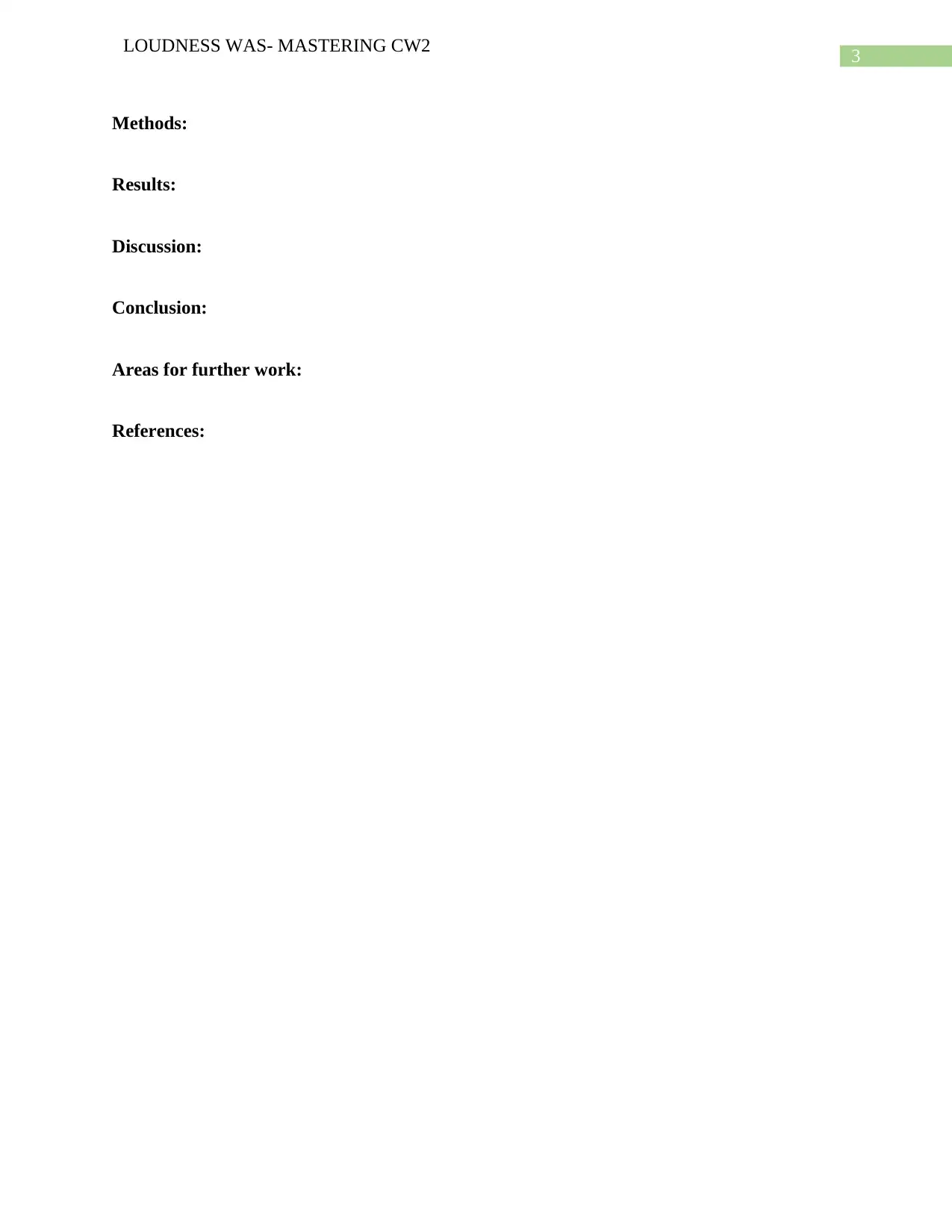Music Technology 5MS504: Loudness War and the Art of Mastering
VerifiedAdded on 2023/05/27
|4
|580
|469
Report
AI Summary
This report delves into the 'loudness war' and its effects on music mastering, particularly focusing on the debate around over-compression. It aims to research methods for achieving loudness in tracks through professional mastering techniques, while avoiding detrimental over-compression. The report analyzes the history and evolution of loudness levels in music, considering both the perspectives of those who support and critique the trend. It also explores the role of technology and digital signal processing in exacerbating the loudness war, while acknowledging improvements in music equipment. The research aims to provide insights for music producers and sound engineers to enhance their understanding and practice of mastering for optimal sound quality.
1 out of 4




![[object Object]](/_next/static/media/star-bottom.7253800d.svg)